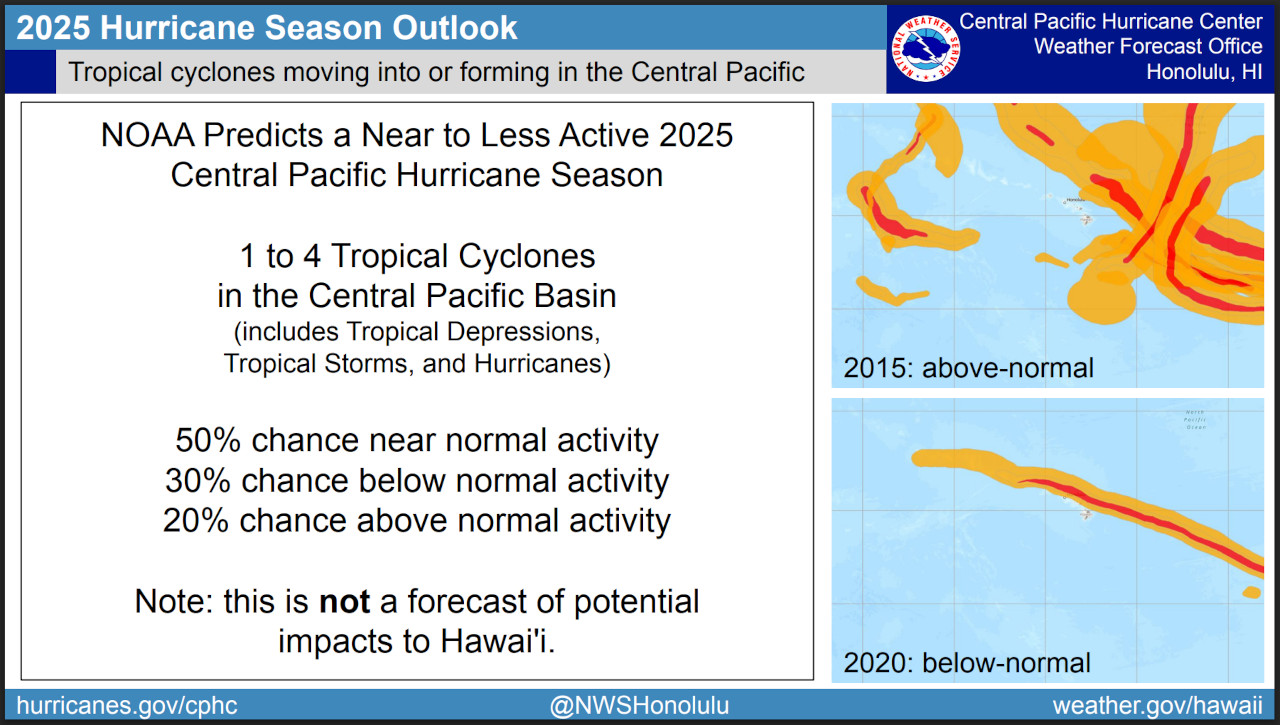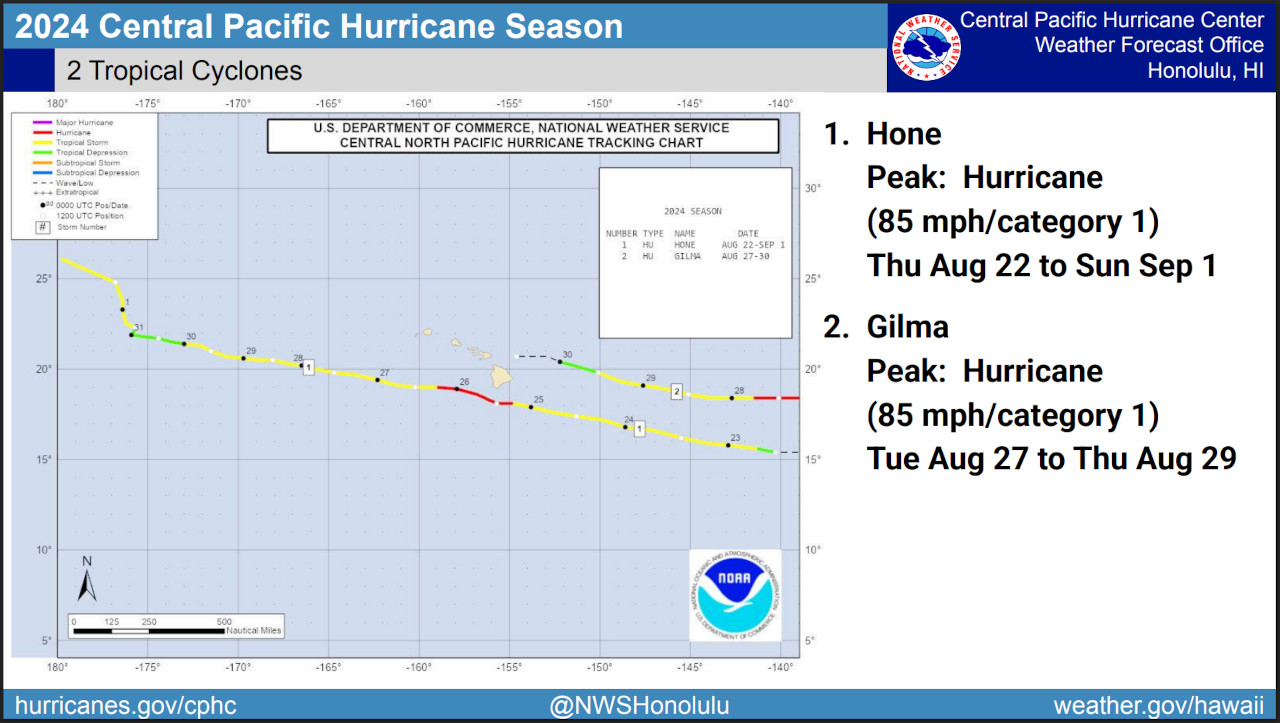(BIVN) – The Central Pacific Hurricane Season begins June 1st, and forecasters predict a less active hurricane season in 2025.
On Thursday, weather experts from the NOAA National Weather Service and Central Pacific Hurricane Center provided their annual outlook for tropical activity over the season, which ends on November 30th.
From a NOAA news release:
In terms of storm numbers, the forecast calls for 1 to 4 tropical cyclones across the central Pacific, which is located north of the equator between 140°W and the International Date Line. A near-normal season has 4 or 5 tropical cyclones. Tropical cyclones include tropical depressions, tropical storms and hurricanes.
The outlook is a guide to the overall seasonal tropical cyclone activity in the central Pacific basin and does not predict whether or how many of these systems will affect Hawaii.
“Even though this season is predicted to be less active, now is the time for residents and businesses to prepare for hurricane season,” said Chris Brenchley, NOAA Central Pacific Hurricane Center director.
The Central Pacific Hurricane Center uses satellites, land-and ocean-based sensors and aircraft reconnaissance missions, all operated by NOAA and its partners, to monitor tropical cyclone activity. These observations are then fed into a variety of NOAA computer models that run on state-of-the-art supercomputers. This information is then used by forecasters to develop storm track and intensity forecasts and provide impact-based decision support services to emergency managers at the county, state and federal levels.
The NOAA news release included a list of “forecast and communication improvements” this season:
- NOAA’s Central Pacific Hurricane Center and National Hurricane Center are extending forecasts a day longer on the sustained hurricane-force wind field (74 miles per hour) from 48 to 72 hours.
- New this year, the Central Pacific Hurricane Center and National Hurricane Center will be able to issue potential tropical cyclone advisory products up to 72 hours before the anticipated arrival of storm surge or tropical-storm-force winds on land, giving communities more time to prepare. Storm surge is the water pushed onto shore by the winds swirling around a hurricane.
- Beginning this year, the National Weather Service will provide storm surge flooding forecasts for the main Hawaiian Islands (Kauai County, Oahu, Maui County, and Hawaii County) so that county emergency managers can better warn coastal residents and businesses.
- NOAA’s National Environmental Satellite, Data and Information Service will offer a new tool that uses satellite observations to help better predict tropical cyclone formation and rapid intensification. The tool is now available for both the Atlantic and Central Pacific basins.



by Big Island Video News6:04 pm
on at
STORY SUMMARY
HONOLULU - A media briefing was held Thursday to go over the tropical cyclone outlook for the 2025 Central Pacific Hurricane Season.